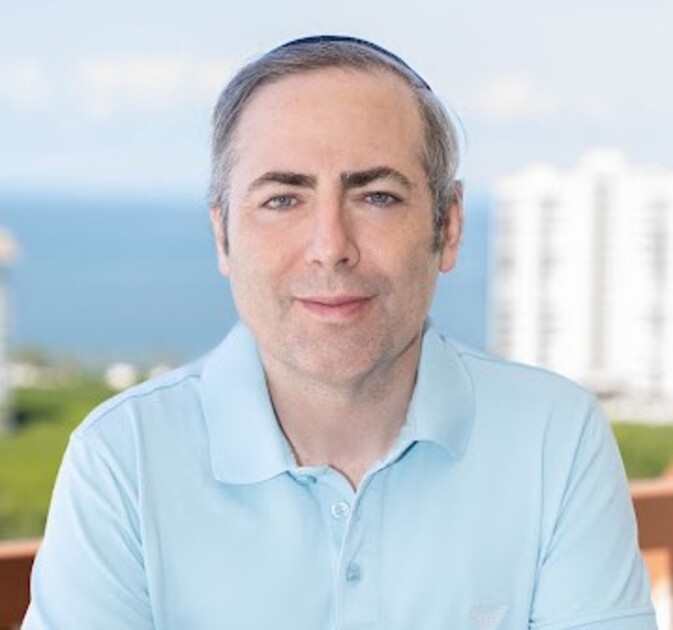
Our Gemara on the end of 23b through the top of 24a discusses the 613 mitzvos, of which there are:
365 prohibitions, corresponding to the days in the solar year, and 248 positive mitzvos, corresponding to a person’s limbs.
Rav Hamnuna said: What is the verse that alludes to this? It is written: “Moshe commanded to us the Torah, an inheritance of the congregation of Yaakov” (Devarim 33:4). The word Torah, in terms of its numerical value [gematriya], is 611, the number of mitzvos received and taught by Moshe our teacher. Additionally, there are two mitzvos—“I am the Lord your God” and “You shall have no other gods” (Shemos 20:2, 3), the first two of the Ten Commandments—that we heard from the mouth of the Almighty, for a total of 613.
The Maharal, in Tiferes Yisrael (4), explains the significance of these numbers. He establishes a premise that mitzvos are not merely commandments from God to please and serve Him (though anthropomorphically represented that way). Instead, they are imperatives from the soul to the body—as if a person were in a pit and a rope was lowered to lift him up. The soul sends a rope from the spiritual world so the body can be rescued and gain immortality by attaching to the divine intellect. Each mitzvah represents an aspect of purification that, pull by pull on the rope, rescues us. The positive mitzvos are those ropes, while the prohibitions guard against anything that destroys the intellectual (spiritual and moral) development of man, thwarting this spiritual attachment.
The 248 positive mitzvos correspond to the limbs, while the 365 prohibitions correspond to the solar year. The positive mitzvos are represented by limbs because limbs are how humans use their skills to consciously build and change things. Spiritual building is still building, and thus limbs are builders. The Sun, on the other hand, represents nature and seasonal cycles, as Koheles says (1:9), “There is nothing new under the Sun.” The 365 prohibitions are actions to abstain from to avoid disrupting the natural order on this physical/spiritual continuum. Now the earlier verse in Koheles (1:3) gains meaning: “Oh, what is accomplished for a man in all that he toils beneath the sun?” If he focuses only on the physical world and maintaining it, he will have nothing in the afterlife.
Although I did not see this, I will build on the Maharal’s thought. The final two mitzvos are described as having been heard directly from the Almighty. The Rambam (Moreh Nevuchim II:33) develops this beautifully. He asks: What is prophecy, and what advantage did Moshe have over the Jewish people in hearing all the mitzvos directly from God? According to the Rambam, God and intellect are one; thus, prophecy and intellectual development are on a continuum, with higher forms of knowledge coming from “knowing” not via observation or deduction, but via connecting with God and true knowledge. Moshe had the entire Torah revealed to him because his prophetic ability allowed his intellect to merge with God more than any other human. The Jews had to “trust” Moshe on these truths, as their limited prophetic ability couldn’t perceive them. However, the first two mitzvos—about the existence and unity of God—are self-evident through logical reasoning. Thus, they were known to the Jews through their own awareness. Rambam stresses: “For these two principles, the existence of God and His Unity, can be arrived at by means of reasoning, and whatever can be established by proof is known by the prophet in the same way as by any other person; he has no advantage in this respect.”
Returning to the Maharal, the first two mitzvos are neither lifelines nor preventive medicine. They are the foundation and prerequisites for the process. Significantly, these two mitzvos came from the Jewish people’s own revelation—their intellectual acquisition of this fact—enabling them to accept and implement what Moshe revealed.
Translations Courtesy of Sefaria, except when, sometimes, I disagree with the translation ![]()
If you liked this, you might enjoy my Relationship Communications Guide. Click on the link above.
Rabbi Simcha Feuerman, Rabbi Simcha Feuerman, LCSW-R, DHL is a psychotherapist who works with high conflict couples and families. He can be reached via email at simchafeuerman@gmail.com
 Previous
Previous

